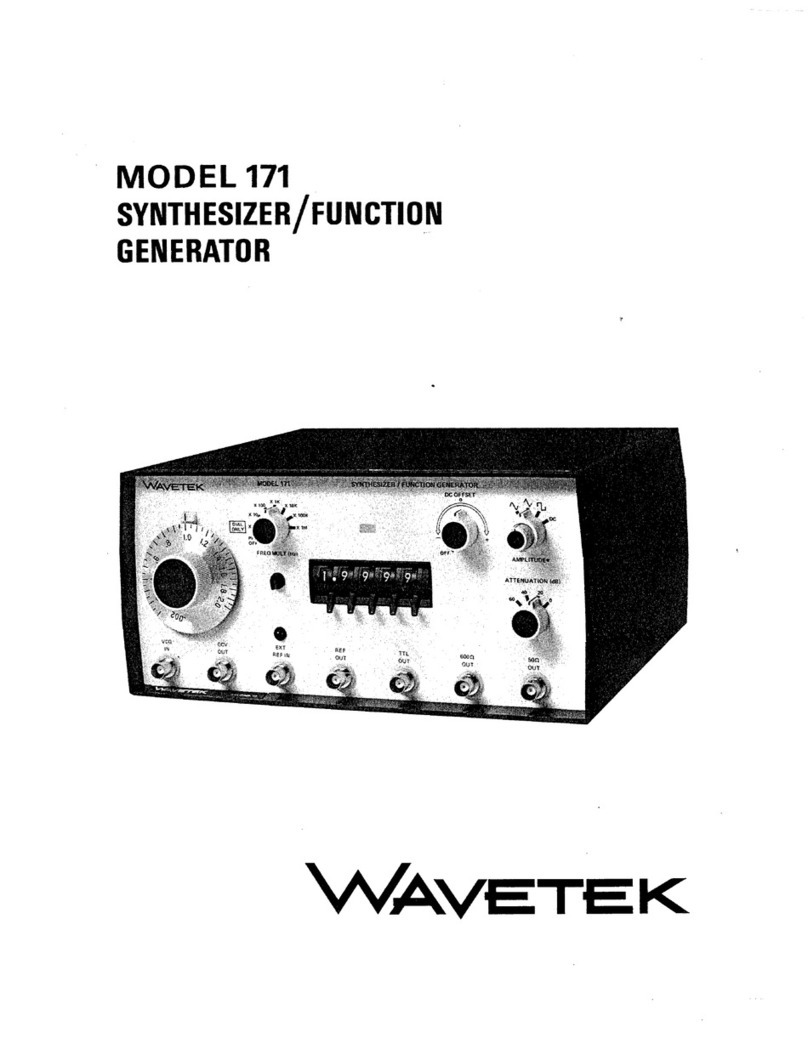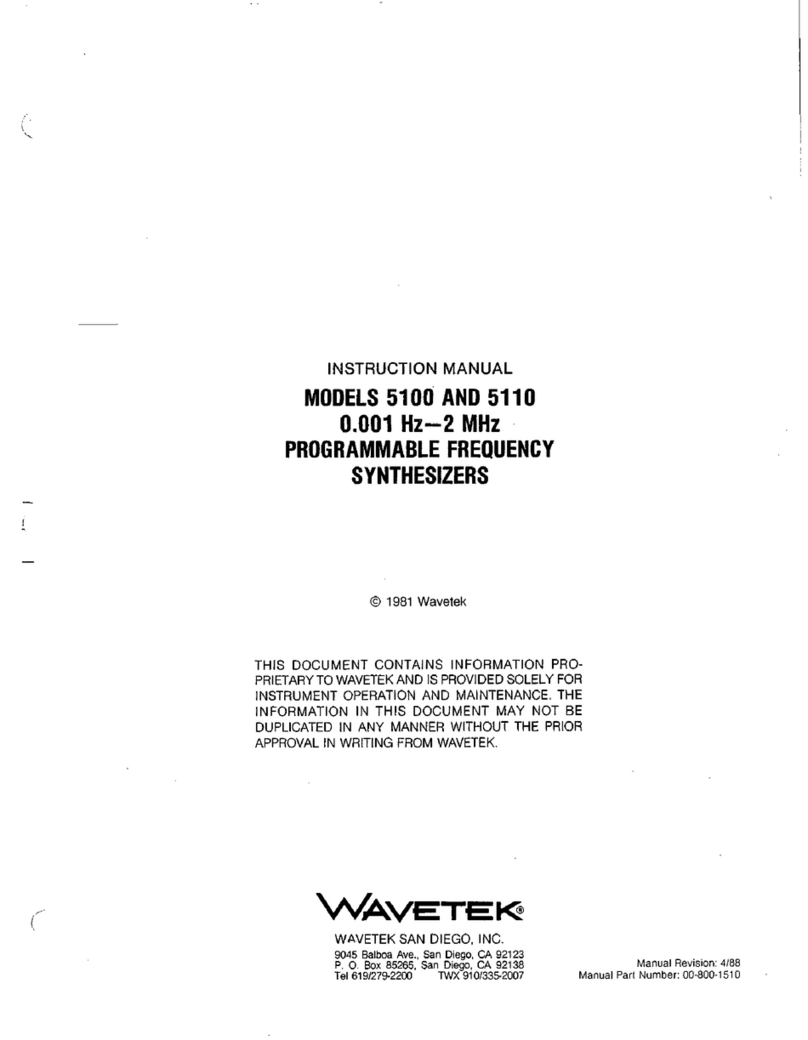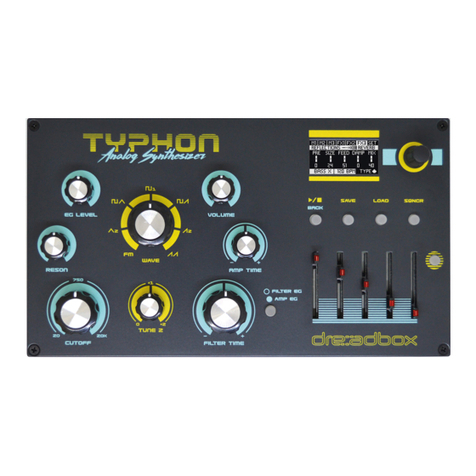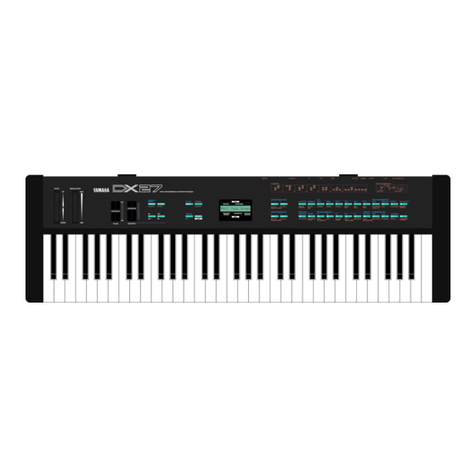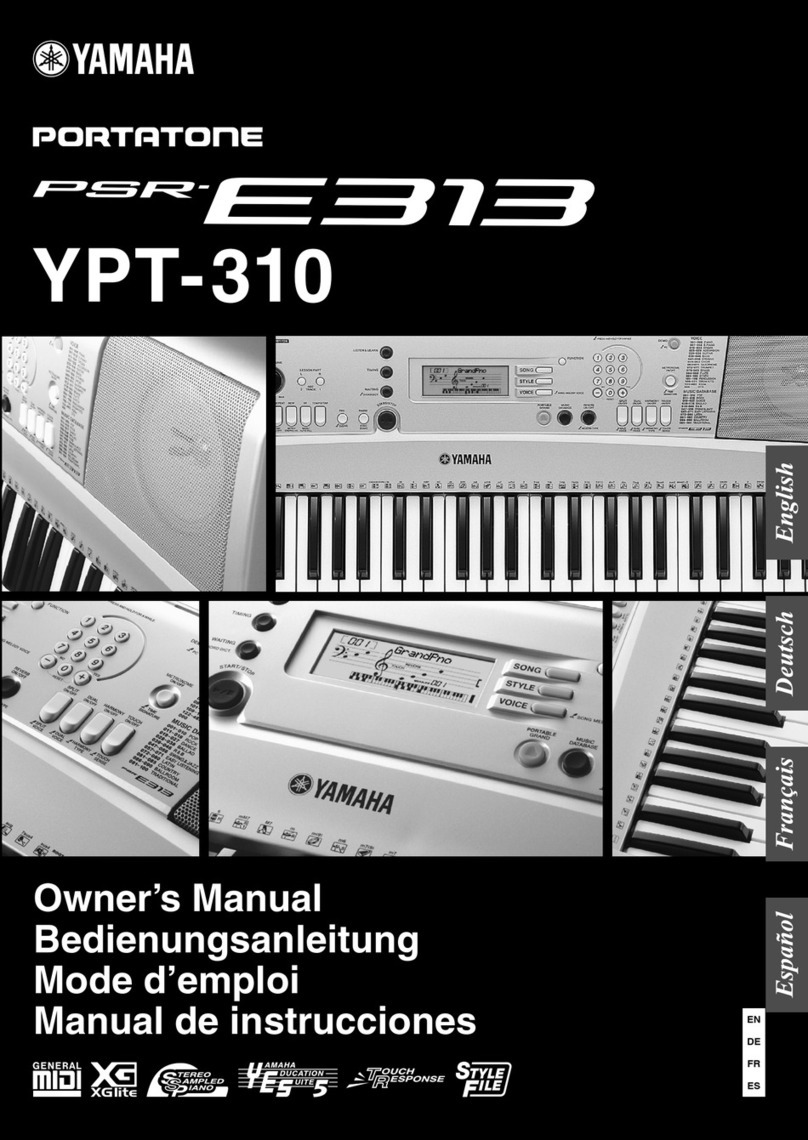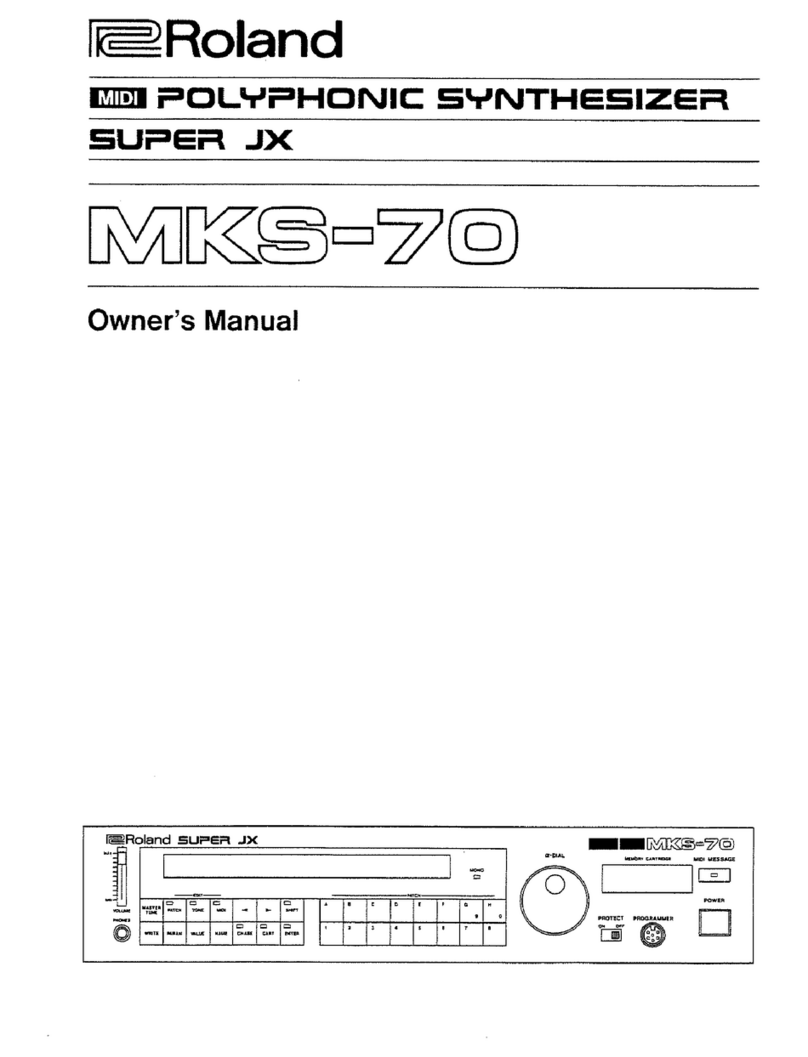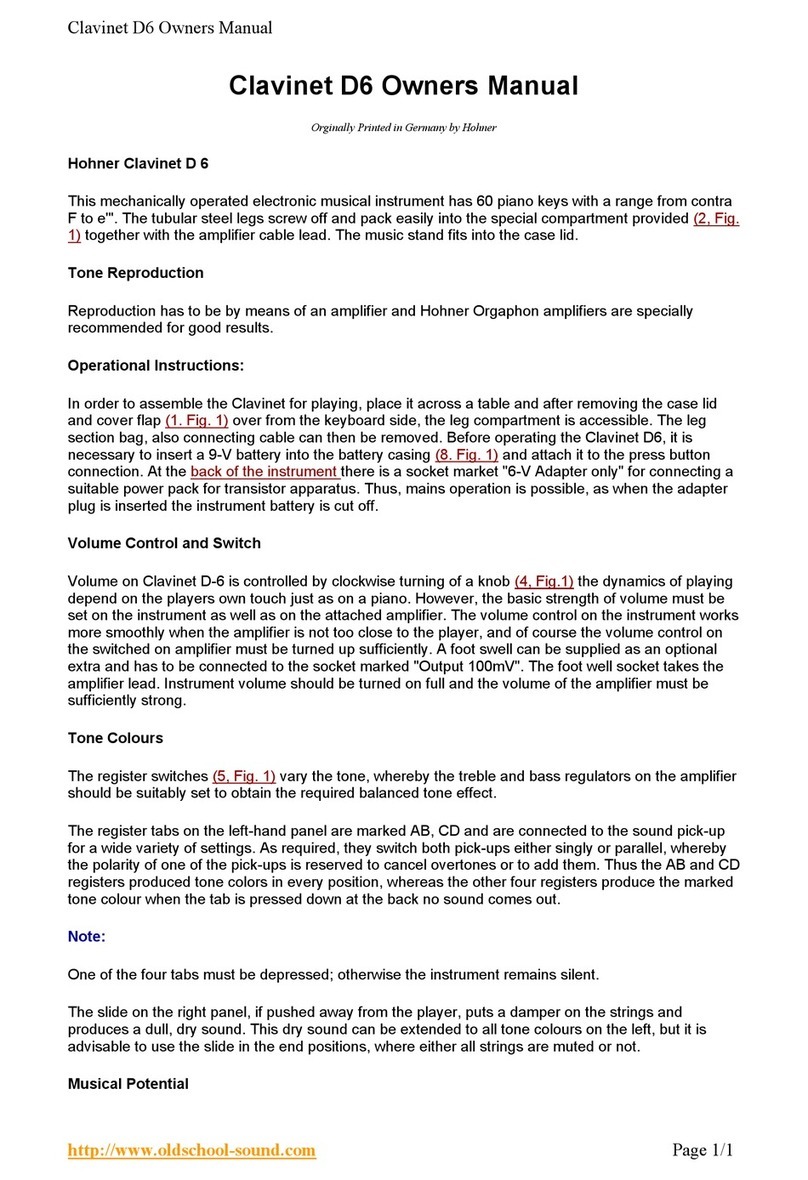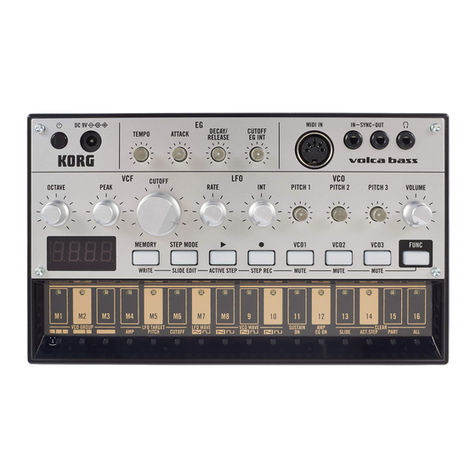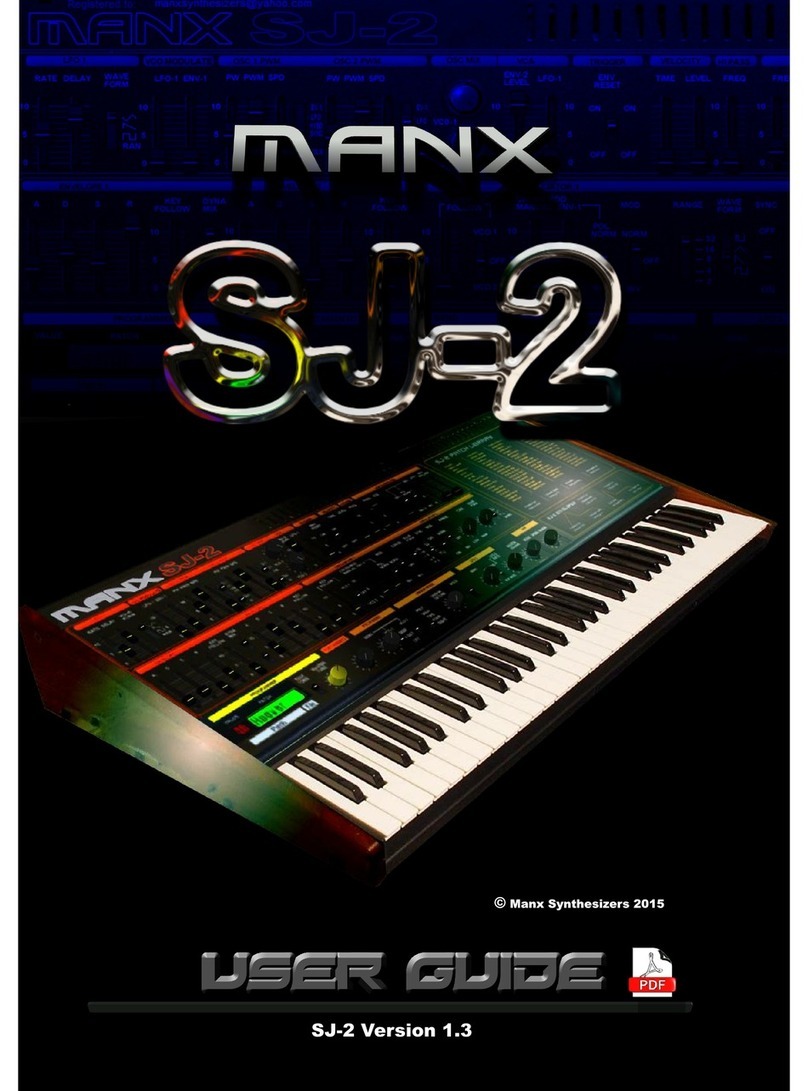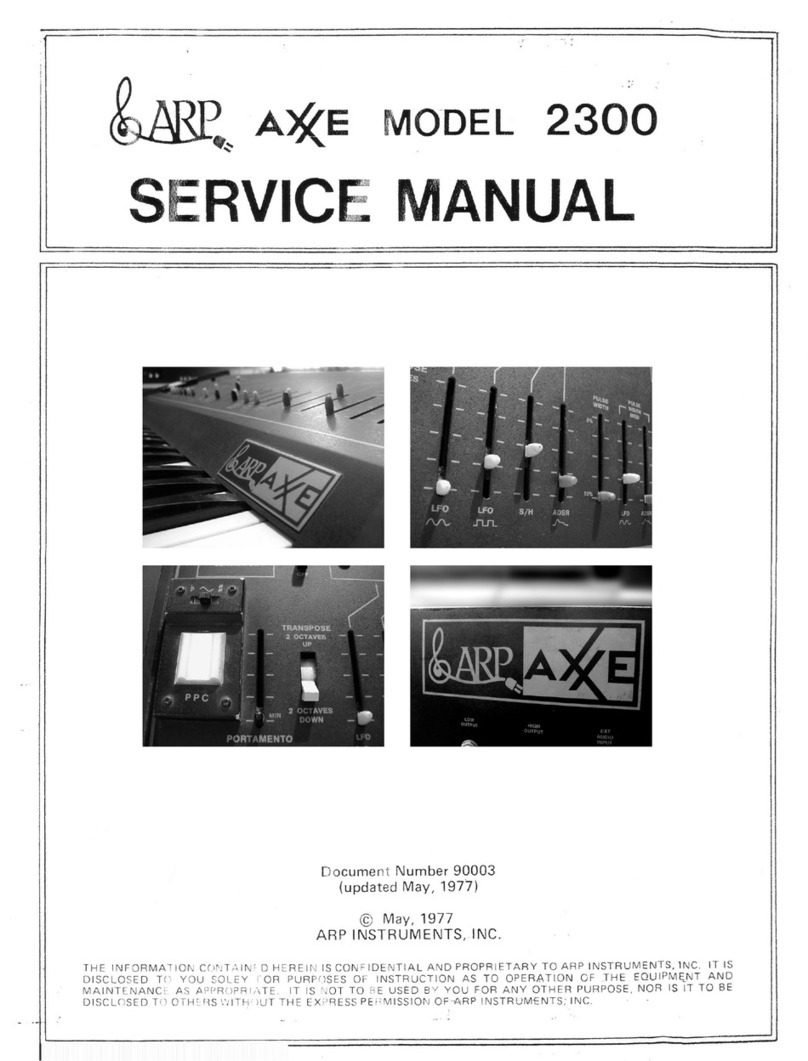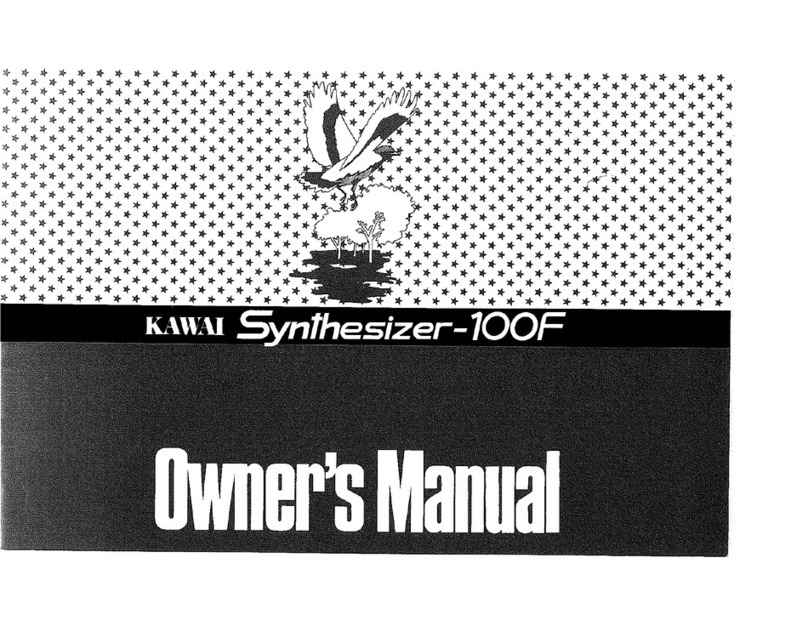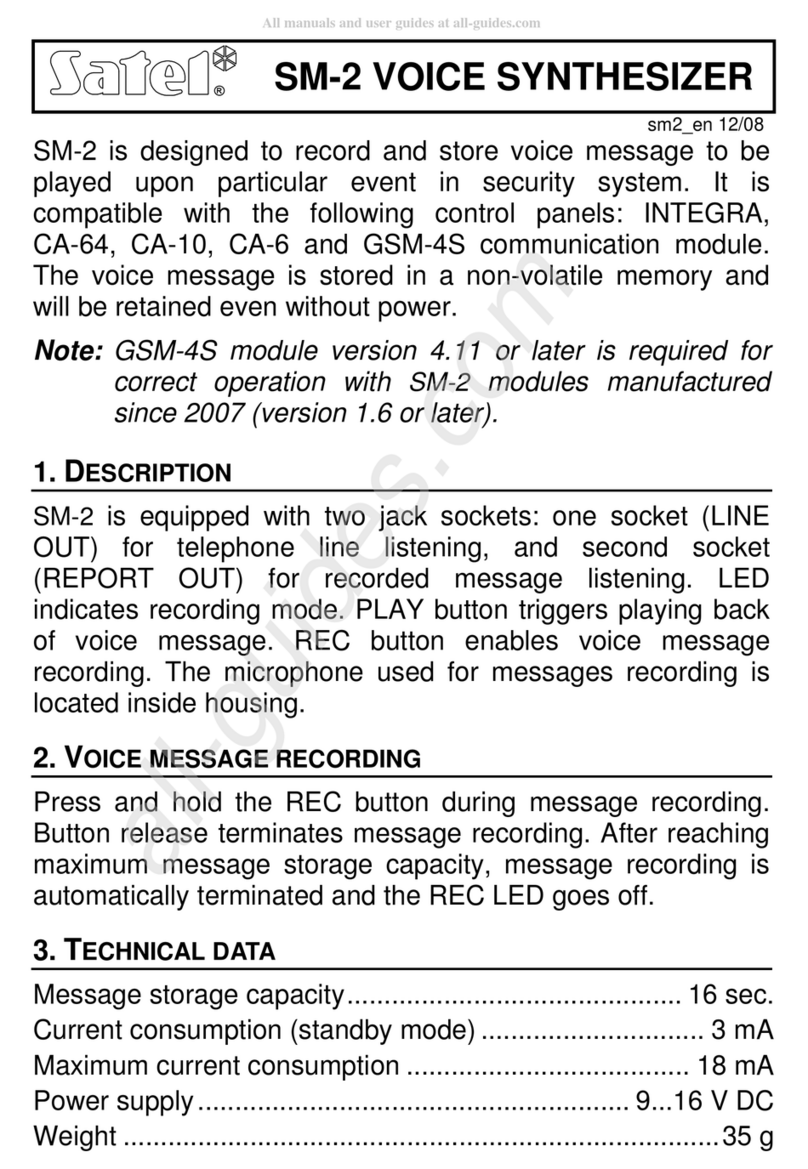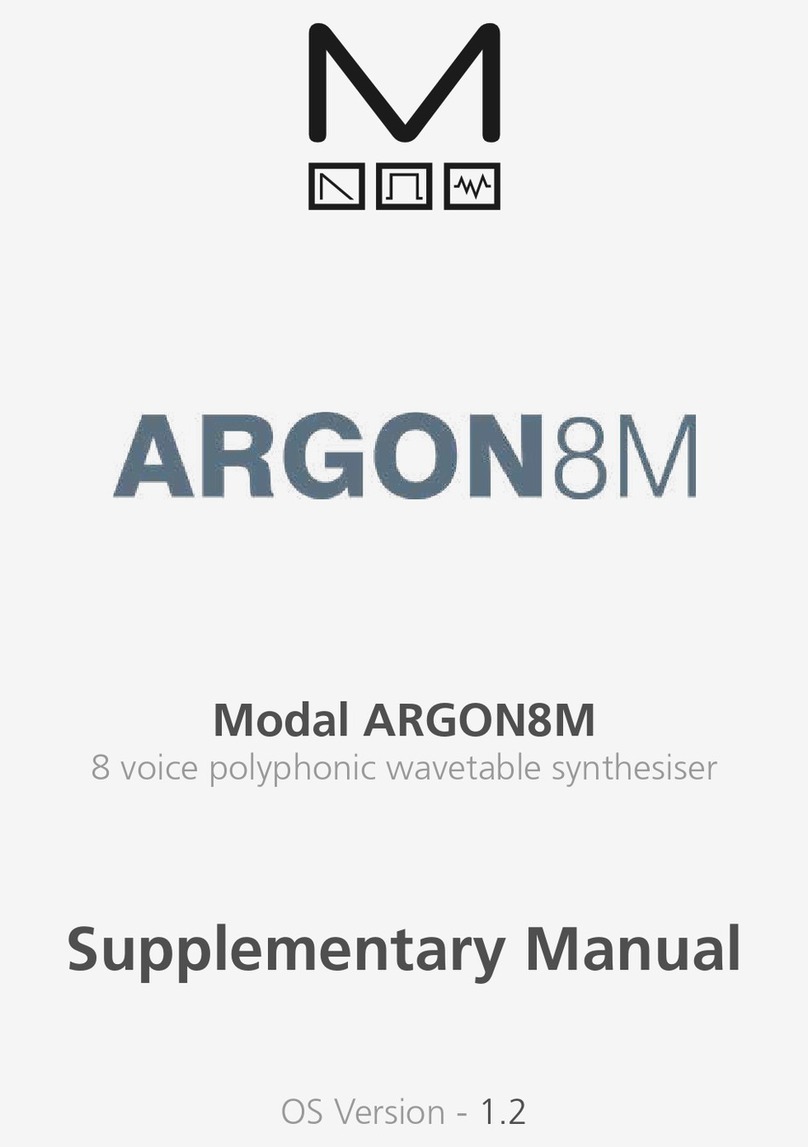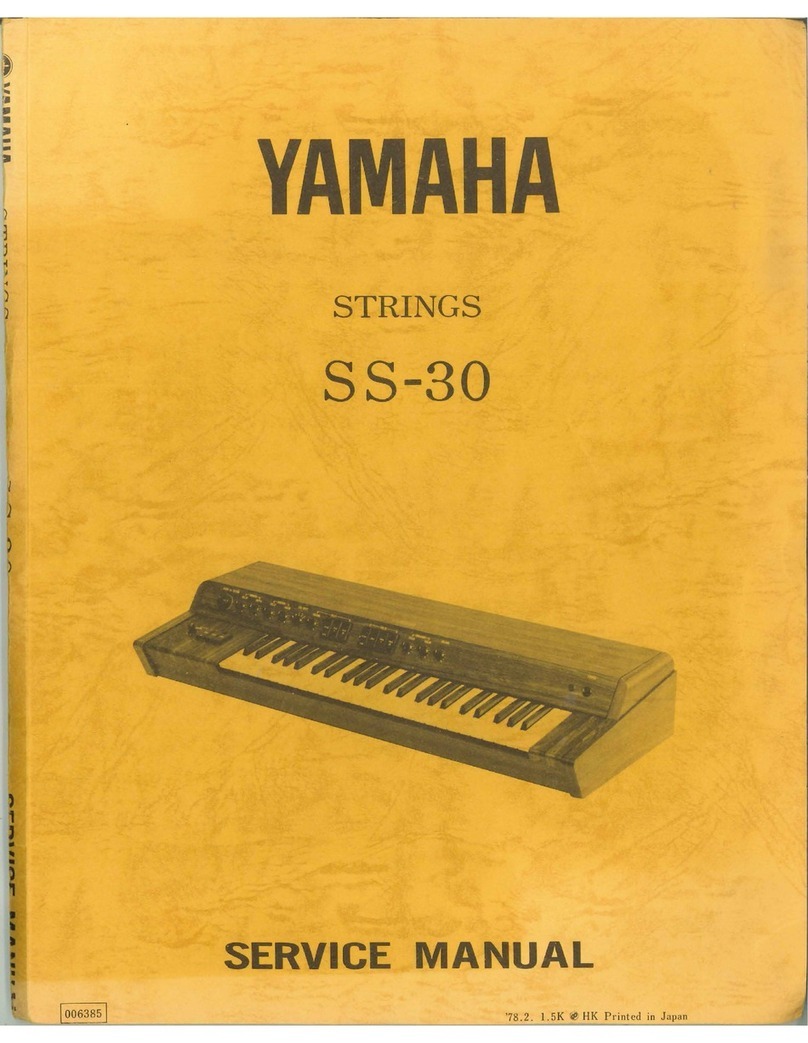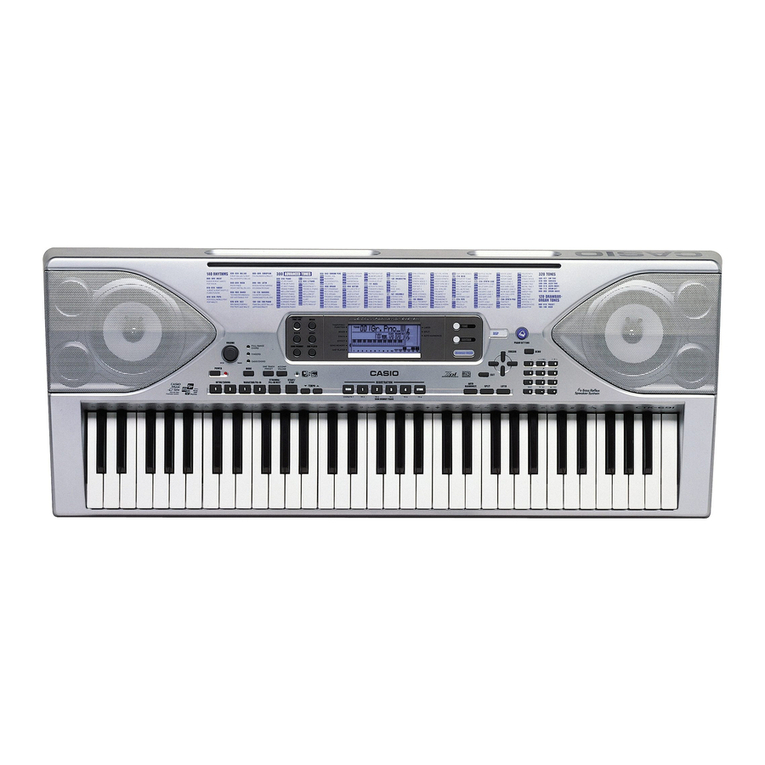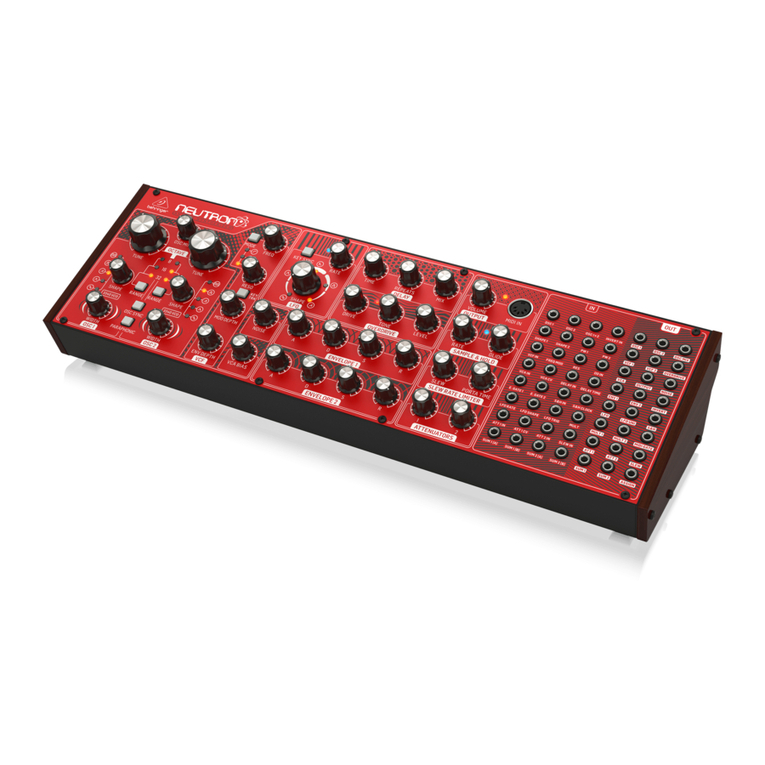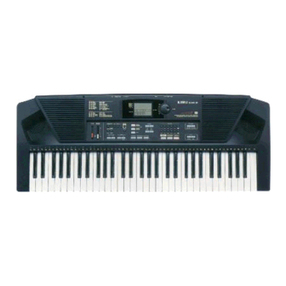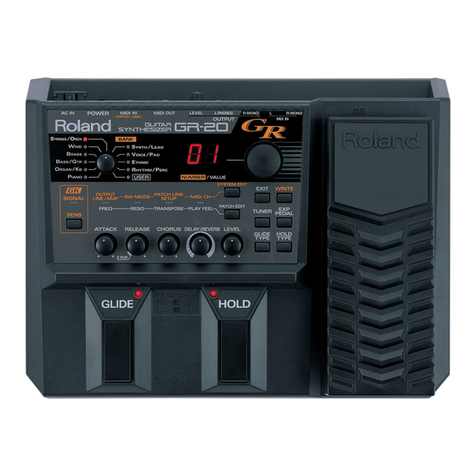Wavetek 1395 User manual

Artisan Technology Group is your source for quality
new and certied-used/pre-owned equipment
• FAST SHIPPING AND
DELIVERY
• TENS OF THOUSANDS OF
IN-STOCK ITEMS
• EQUIPMENT DEMOS
• HUNDREDS OF
MANUFACTURERS
SUPPORTED
• LEASING/MONTHLY
RENTALS
• ITAR CERTIFIED
SECURE ASSET SOLUTIONS
SERVICE CENTER REPAIRS
Experienced engineers and technicians on staff
at our full-service, in-house repair center
WE BUY USED EQUIPMENT
Sell your excess, underutilized, and idle used equipment
We also offer credit for buy-backs and trade-ins
www.artisantg.com/WeBuyEquipment
REMOTE INSPECTION
Remotely inspect equipment before purchasing with
our interactive website at www.instraview.com
LOOKING FOR MORE INFORMATION?
Visit us on the web at www.artisantg.com for more
information on price quotations, drivers, technical
specications, manuals, and documentation
Contact us: (888) 88-SOURCE | sales@artisantg.com | www.artisantg.com
SM
View
Instra

OPLKATION
AND
MAIN
I
ENANCL
MANUAL
Model
l395/1395
Mate
50
MHz
VXIbus Arbitrary
Waveform
Synthesizer
O
1996Wavetek
Ltd
This document contains information proprietary
to Wavetek and is provided solely
for
instrument
operation and maintenance. The information in
this document may not be duplicated in any
manner without the prior approval inwriting
from Wavetek.
Wavetek
Ltd.
Hurricane
W'q,
Norwich Airp~)rtIndustrial
Estatc
Nurwch
Nl~rfolkNllh hJ13
I1K
Manual Revision
C,
6195
Manual Part Number 1006-00-0699
Artisan Technology Group - Quality Instrumentation ... Guaranteed | (888) 88-SOURCE | www.artisantg.com

WARRANTY
Wavetek warrants that all products manufactured by Wavetek conform to published Wavetek
specifications and are free from defects in materials and workmanship for a period of one
(1)
year from the date of delivery when used under normal conditions and within the service condi-
tions for which they were furnished.
The obligation of Wavetek arising from a Warranty claim shall be limited to repairing, or at its
option, replacing without charge, any product which in Wavetek's sole opinion proves to be
defective within the scope of the Warranty. In the event Wavetek is not able to modify, repair or
replace non-conforming defective parts or components to a condition as warrantied within a
reasonable time after receipt thereof, Buyers shall be credited for their value at the original
purchase price.
Wavetek must be notified in writing of the defect or nonconformity within the Warranty period
and the affected product returned to Wavetek's factory or to an authorized service center within
(30)
days after discovery of such defect or nonconformity.
For product warranties requiring return to Wavetek, products must be returned to a service
facility designated by Wavetek. Buyer shall prepay shipping charges, taxes, duties and insurance
for products returned to Wavetek for warranty service. Except for products returned to Buyer
from another country, Wavetek shall pay for return of products to Buyer.
Wavetek shall have no responsibility hereunder for any defect or damage caused by improper
storage, improper installation, unauthorized modification, misuse, neglect, inadequate mainte-
nance, accident or for any product which has been repaired or altered by anyone other than
Wavetek or its authorized representative and not in accordance with instructions furnished by
Wavetek.
Exclusion of Other Warranties
The Warranty described above is Buyer's sole and exclusive remedy and no other warranty,
whether written or oral, is expressed or implied. Wavetek specifically disclaims the implied
warranties of merchantability and fitness for a particular purpose. No statement, representation,
agreement, or understanding, oral or written, made by an agent, distributor, representative, or
employee of Wavetek, which is not contained in the foregoing Warranty will be binding upon
Wavetek, unless made in writing and executed by an authorized Wavetek employee. Under no
circumstances shall Wavetek be liable for any direct, indirect, special, incidental, or consequen-
tial damages, expenses, losses or delays (including loss of profits) based on contract, tort, or any
other legal theory.
This productcomplieswith the requirementsof the following EuropeanCommunity Directives:
Cf
89/33B/EEC
(Electromagnaic
Compatiblllty)
and
731231EEC
(Low
Voltage)
as amended
by
93/68/EEC (CE
Marking).
However,noisy or intense electromagneticfields in the vicinity of the equipmentcandisturb the measurement
circuit. Users should exercise caution and use appropriate connection and cabling configurationsto avoid
misleadingresults when makingprecisionmeasurementsin the presenceof electromagnetic interference.
Artisan Technology Group - Quality Instrumentation ... Guaranteed | (888) 88-SOURCE | www.artisantg.com

SAFETY
FIRST
PROTECTYOURSELF.
Follow these precautions:
Don't touch the outputs of the instrument or any exposed test wiring
carrying the output signals. This instrument can generate hazardous voltages and
currents.
.
Don't bypass the
VXI
chassis' power cord's ground lead with two-wire
extension cords or plug adaptors.
.
Don't disconnect the green and yellow safety-earth-ground wire that
connects the ground lug of the
VXI
chassis power receptacle to the chassis
ground terminal (marked with
@
or
a
).
Don't hold your eyes extremely close to an rf output for a long time. The
normally nonhazardous low-power rf energy generated by the instrument could
possibly cause eye
injury.
Don't energize the
VXI
chassis until directed to by the installation
instructions.
.
Don't repair the instrument unless you are a qualified electronics techni-
cian and know how to work with hazardous voltages.
.
Pay attention to the
WARNING
statements. They point out situations
that can cause injury or death.
.
Pay attention to the
CAUTION
statements. They point out situations that
can cause equipment damage.
CONTENTS
iii
Artisan Technology Group - Quality Instrumentation ... Guaranteed | (888) 88-SOURCE | www.artisantg.com

CONTENTS
SECTION
1
GENERAL
1.1 THE MODEL 1395
...................................................................................
1-1
1.2 SPECIFICATIONS
....................................................................................
1-1
.......................................................................
1.2.1 Waveforms(Functions) 1-1
..................................................
1.2.2 ARB WaveformCreation and Editing 1-1
.............................................................................
.
1 2.3 Operational Modes 1-2
..........................................................
1.2.4 Input and Output Specifications 1-2
...............................................................................................
1.2.4.1 Outputs 1-2
1.2.4.2 Inputs
..................................................................................................
1-4
1.2.5 WaveformCharacteristics
...................................................................
1-5
1.2.6 Frequency
...........................................................................................
1-6
.......................................................
1.2.6.1 Arb Clock and Waveform Timing: 1-6
...........................................................................................
1.2.7 Amplitude 1-6
1.2.8 Offset
..................................................................................................
1-6
1.2.9 Filtering
..............................................................................................
1-6
1.2.1
0
Linked SEQuenceOperation
..............................................................
1-7
1.2.11 Sweep
.................................................................................................
1-7
1.2.12 Triggering
......................................................................................
1-7
1.2.13 Modulation
........................................................................................
1-8
1.2.14 IntermoduleOperation
........................................................................
1-8
1.2.15 Frequency List
....................................................................................
1-9
1.2.16 Option
...............................................................................................
1-9
...........................................................................
1.2.1
7
AutoCal/Diagnostics 1-9
1
.
3 GENERAL
.................................................................................................
1-9
.............................................................................
1.3.1 SCPl Programming 1-9
1.3.2 VXI Interface
......................................................................................
1-10
1.3.3 Environmental-
....................................................................................
1-11
1.3.4 Size
.....................................................................................................
1-11
1.3.5 Power
.................................................................................................
1-11
1.3.6 Reliability
............................................................................................
1-11
..........................................................................
1.3.7 Cooling Requirement 1-11
1.3.8 Safety
.................................................................................................
1-11
1.3.9 EMC
....................................................................................................
1-11
SECTION
2
PREPARATION
2.1 RECEIVINGINSPECTION
.......................................................................
2-1
2.1.1 Unpacking Instructions
.......................................................................
2-1
2.1.2 Returning Equipment
..........................................................................
2-1
2.2 PREPARATIONFOR STORAGE OR SHIPMENT
....................................
2-1
2.2.1 Packaging
...........................................................................................
2-1
2.2.2 Storage
...............................................................................................
2-1
2.3 PREPARATIONFOR USE
.......................................................................
2-1
..................................................................
2.3.1 LogicalAddress Selection 2-2
.............................................................
2.3.2 DataTransferBusArbitration 2-2
2.4 INSTALLATION
.........................................................................................
2-4
......................
2.5 INITIAL CHECKOUT AND OPERATIONVERIFICATION
2-4
Artisan Technology Group - Quality Instrumentation ... Guaranteed | (888) 88-SOURCE | www.artisantg.com

CONTENTS (Continued)
SECTION
3
OPERATION
.......................................................................................
3.1 INTRODUCTION 3-1
.................................................
3.2 CONNECTORS AND LED INDICATORS 3-1
................................................................
3.3 MODEL 1395PROGRAMMING 3-1
........................................................................
SCPl CommandTable 3-1
Long and Short Form Keywords
.........................................................
3-4
Command MessageFormat
...............................................................
3-4
ProgramMessage Unit
.......................................................................
3-4
Program Message
..............................................................................
3-4
ProgramMessage Delimiters
.............................................................
3-4
Parameter Forms
................................................................................
3-4
..........................................................
ProgramMessageTerminators 3-8
...............................................................................................
Queries 3-8
Model 1395SCPl Commands
...........................................................
3-9
CALibrationSubsystem
..................................................................
3-9
............................................................................
INlTiateSubsystem 3-11
............................................................................
OUTPut Subsystem 3-11
...............................................................................
RESet Subsystem 3-13
SOURce Subsystem
..........................................................................
3-13
............................................................................
STATUSSubsystem 3-18
SYSTem Subsystem
.....................................................................
3-19
TEST Subsystem
...........................................................................
3-19
Trace Subsystem
................................................................................
3-20
TRlGger Subsystem
.........................................................................
3-22
High Speed Binary WaveformTransfer
.............................................
3-22
IEEE-488.2 Common Commands
.......................................................
3-25
3.4 MODEL 1395OPERATION
.....................................................................
3-25
...........................................................................
OutputTerminations 3-25
.......................................................................
Input/OutputProtection 3-26
...................................................................
PowerOnIReset Defaults 3-26
...................................................................
StandardFunctions(CW) 3-29
..................................
Trace Operationsand USER Function(RAST) 3-29
Trace Definition
.................................................................................
3-29
Trace Data
..........................................................................................
3-31
.........................................
Trace Copy. Resize. Rename. and Delete 3-32
Trace Limits
......................................................................................
3-32
Trace Queries
...................................................................................
3-33
Waveform DownloadOperations
........................................................
3-34
.............................................
DefiniteLengthArbitrary BlockTransfer 3-34
.............................................................
WaveForm DSPTMDownload 3-35
....................................................................
Shared MemoryTransfer 3-37
Non-continuousModes
.......................................................................
3-38
TriggeredOperation
..........................................................................
3-39
.................................................................................
GatedOperation 3-42
...........................................................................
Sequence Operation 3-42
...................................................................
CONTinuous Sequencing 3-42
TRlGgered Mode Sequencing
............................................................
3-45
AMISCM Operation
...........................................................................
3-45
Artisan Technology Group - Quality Instrumentation ... Guaranteed | (888) 88-SOURCE | www.artisantg.com

CONTENTS (Continued)
SyncIPositionMarkers
........................................................................
3-46
FrequencySweep
...............................................................................
3-47
Sweep Generator
...............................................................................
3-48
Frequency List
....................................................................................
3-49
SUMBUS Operation
............................................................................
3-49
Clock InpuWOutput Operation
.............................................................
3-51
IntermoduleOperations
.....................................................................
3-54
lntermoduleTriggering
.......................................................................
3-54
IntermodulePhase Lock
.....................................................................
3-58
SECTION
4
CALIBRATION
...................................................................................
4.1 FACTORY REPAIR 4-1
..........................................................................................
4.2 CALIBRATION 4-1
4.3 REQUIREDTEST EQUIPMENT
...............................................................
4-1
....................................
4.4 PERFORMANCEVERIFICATIONPROCEDURE 4-1
StandardTest Equipment
...................................................................
4-2
StandardTest Conditions
..................................................................
4-2
Test Specifications
..............................................................................
4-2
.................................................................................
VXlbus Interface 4-2
Self Test
.............................................................................................
4-2
FunctionOutputOnIOff
......................................................................
4-2
Trigger Count
.....................................................................................
4-2
....................................................................................
Trigger Source 4-3
....................................................................
Sine Amplitude Accuracy 4-3
...............................................................
Square Amplitude Accuracy 4-4
...........................................................................
AttenuatorAccuracy 4-4
DC OffsetAccuracy
............................................................................
4-4
..........................................................................
FrequencyResponse 4-5
...................................................................
SquareWaveformQuality 4-5
.....................................................................
SquarewaveDuty Cycle 4-5
Sync Marker Output
...........................................................................
4-6
PositionMarker Output
.......................................................................
4-6
Clock Output
.......................................................................................
4-6
Clock Input
..........................................................................................
4-6
Frequency Sweep
..............................................................................
4-6
.....................................................................
4.5 ALIGNMENT PROCEDURE 4-7
...................................................................................
4.5.1 Self Calibration 4-7
...............................................................
4.5.2 Semi-AutomatedProcedure 4-7
.........................................................................................
4.5.3 Preparation 4-7
4.5.4 ConnectorTermination
.......................................................................
4-8
4.5.5 Alignment Procedure
..........................................................................
4-8
4.5.5.1 Square Wave Symmetry
...................................................................
4-8
4.5.5.2 Square Wave Quality
..........................................................................
4-8
.........................................................................
4.5.5.3 SUMBUS DriverZero 4-9
...................................................................................
4.5.5.4 Self Calibration 4-9
............................................................................................
4.5.5.5 SCM Null 4-9
4.5.5.6 Elliptic Filter Amplitude FlatnessCorrection
.......................................
4-10
Artisan Technology Group - Quality Instrumentation ... Guaranteed | (888) 88-SOURCE | www.artisantg.com

CONTENTS (Continued)
SECTION
5
PARTS AND SCHEMATICS
5.1 DRAWINGS
..............................................................................................
5-1
5.2 ERRATA
...................................................................................................
5-1
5.3 ORDERING PARTS
..................................................................................
5-1
APPENDIX
A
SELF CALIBRATION
A.l INTRODUCTION
.......................................................................................
A-1
A.2 CALIBRATION QUERY RESPONSE
...................................................
A-1
APPENDIX
B
SELF TEST
.......................................................................................
B.l INTRODUCTION B-1
B.2 TEST QUERY RESPONSE
....................................................................
B-1
APPENDIX C SCPI CONFORMANCE INFORMATION
C.l INTRODUCTION.......................................................................................C-1
C.2 REFERENCE INFORMATION
..................................................................
C-1
C.3 SCPl CONFORMANCE INFORMATION
...............................................
C-2
(2.3.1 Model 1395 SCPl version
...................................................................
C-2
C.4 MODEL 1395 SCPl COMMAND SYNTAX
..............................................
C-2
C.4.1 SCPl Confirmed Commands
............................................................
C-2
C.4.2 SCPl Approved Commands
.........................................................
C-2
C.4.3 Commands not part of the SCPI Specification
....................................
C-2
C.4.4 Incomplete Command lnplementation
................................................
C-2
APPENDIX D SCPl COMMANDTREE
D.l COMMAND TREES
.................................................................................
D-1
APPENDIX E SAMPLE PROGRAMS
E.l INTRODUCTION
.......................................................................................
E-1
E.l.l Example 1.......................................................................................E-1
E.1.2 Example 2
......................................................................................
E-2
E.1.3 Example
3
...........................................................................................
E-3
E.1.4 Example 4...........................................................................................E-4
E.1.5 Example 5
...........................................................................................
E-5
APPENDIX F MATE INTERFACESYNTAX
.......................................................................................
F.l INTRODUCTION F-1
F.2 GAL COMMAND .......................................................................................F-1
..................................................
F.3 ARB GENERATOR DOCUMENTATION F-1
................................................
F.4
ARB GENERATOR ERROR MESSAGES F-2
.........................................
F.5 MlSC ARB GENERATOR DOCUMENTATION F-4
Artisan Technology Group - Quality Instrumentation ... Guaranteed | (888) 88-SOURCE | www.artisantg.com

Table 2-1
Table 3-1
Table 3-2
Table 3-4
Table
3-5
Table 3-6
Table
4-1
Table C-2
Test Equipmentand Tools
.....................................................
2-4
Model
1395
Front Panel
.........................................................
3-3
Model 1395CommandSummary
..........................................
3-5
.......................................................................
Error Messages
3-24
IEEE
488.2 CommonCommands
........................................
3-25
................................................
Inputand Output Impedances 3-26
List of Test Equipment
...........................................................
4-1
Model 1395CommandSummary
........................................
C-3
viii
CONTENTS
Artisan Technology Group - Quality Instrumentation ... Guaranteed | (888) 88-SOURCE | www.artisantg.com

ILLUSTRATIONS
Figure 1-1
Figure 2-1
Figure 2-2
Figure 3-1
Figure 3-3
Figure 3-4
Figure
3-5
Figure 3-6
Figure 3-7
Figure 3-8
Figure 3-3
Figure
3-10
Figure 3-11
Figure 3-1
2
Figure 3-13
Figure 3-14
Figure D-1
Figure D-2
Figure D-3
Figure D-4
Figure D-5
Figure D-6
Figure D-7
Figure D-8
Figure F-1
Figure F-2
Figure F-3
Figure F-4
Figure F-5
Model 1395 50 MHz Arbitrary Waveform Synthesizer
......,....
1-0
.........................................................
Set the Logical Address
2-2
BusArbitration Level Jumpers
...............................................
2-3
.........................................................
Model 1395 Front Panel 3-2
.................................................................
Output Termination 3-26
.......................................
Model 1395 Basic Operating Setup 3-27
...................................
Continuous Waveform Characteristics 3-28
Definite Length Arbitrary Block Data Format
..........................
3-33
VXlbus System Using "External Host" GPlB Controller
.........
3-36
Triggered Waveform Characteristics. Count
=
1
....................
3-38
GateIBurst Waveform Characteristics
....................................
3-40
CONTinuous Sequence State Diagram
.................................
3-41
TRlGgered Sequence State Diagram
....................................
3-44
Sweep Mode Characteristics
................................................
3-47
IntermoduleTriggering Backplane Connections
....................
3-51
IntermoduleTriggering Command References
......................
3-52
Subsystems (Root Node)
.......................................................
D-1
INITiate. STATUS.TEST. and RESet Subsystems
.................
D-2
SOURce Subsystem
............................................................
D-3
TRACe Subsystem
...........................................................
D-4
TRlGger Subsystem
..............................................................
D-5
OUTPut System
......................................................................
D-6
SYSTem Subsystem
..............................................................
D-7
CALibrator Subsystem
..........................................................
D-8
..................................................
Common Command Format F-4
......................................................
Sine and Triangle Format F-5
.....................................................
Square and Ramp Format F-6
............................................
User Defined Waveform Format F-7
DC Function Format
...............................................................
F-8
Artisan Technology Group - Quality Instrumentation ... Guaranteed | (888) 88-SOURCE | www.artisantg.com

-
50
MHz
Arbitrar)
Waveform Synthesiz
model
1395
RUN
0
FAIL
@
CLK
INIOUT
TRIG IN
MAINOUT
model
1395
Artisan Technology Group - Quality Instrumentation ... Guaranteed | (888) 88-SOURCE | www.artisantg.com

Specificalions
Section
1
1.1
THE
MODEL
1395
The MODEL 1395is a high performance Synthe-
sized Arbitrary Waveform Generator (ARB)with
the following main features:
Up to 50 MHz Sampling Frequency
12 Bit Vertical Resolution
32K points (128K optional) Horizontal Reso-
lution
Intermodule Triggering, Summing and
Phase Control
Waveform Linking and Looping
64K bytes Shared Memory for fast data
transfer
SCPI Compatible Command Language
Single Slot, C-Size VXIbus Module
The waveform synthesizer can be programmed to
produce standard waveforms in the frequency
range of 1 pHz to 25 MHz; or arbitrary waveforms
from 5 points minimum to 32K (128K)maximum
sampled at frequencies from 125mHz to 50 MHz.
Additionally, a Clock Output is provided from 125
mHz to 100 MHz.
Waveforms can be created by selection of the stan-
dard waveforms, drawing waveforms by defining
straight line segments, or downloading of binary
images. The A24 Shared Memory may be used for
significantly faster downloads than by using the
word-serial protocol.
The main waveform output provides up to 15Vp-
p into 50R (30 Vp-p, open circuit). Waveform dc
offset or dc output
is
also provided up to k7.5 V
into 50R (k15V into open circuit).
The control language adheres to the SCPI (Stan-
dard Commands for Programmable Instruments)
format Version 1992.0,February 1992 (refer to the
SCPI manual for further information). SCPI is an
industry standard language for remote instrument
programming. The Wavetek Model 1395wave-
form synthesizer is a single-slot "C" size VXIbus
module. Using any manufacturer's VXIbus chas-
sis, the Model 1395can be controlled using the
SCPI language and the appropriate controller.
Multiple ARBSmay be linked and operated togeth-
er inside one VXIbus chassis. Series operation is
provided by full support of the VXIbus SUMBUS
protocol. A signal programmed at the output may
be sent to the SUMBUS, or signal present at the
SUMBUSmay be summed into the model 1395out-
put. In parallel operation, model 1395's may be
slaved to a master clock/trigger bus on the VXIbus
backplane to create a multichannel waveform syn-
thesizer with phase control between channels.
The model 1395has extensive self-adjustment util-
ities built in. Calibration constants are maintained
in non-volatile memory (containsno battery).
1.2
SPECIFICATIONS
1.2.1
Waveforms
(Functions)
Programmable standard functions include sine, tri-
angle, square, positive ramp, negative ramp, posi-
tive haversine, negative haversine, random
(noise),sinc (sin x/x) and dc. (The function
"WTST"
is a reserved function name used for fac-
tory maintenance, and it should not be selected as
a
function or used to name an arbitrary wave-
form.) One to fifty arbitrary waveforms (traces)
may be stored by name in volatile 32,768 point
(optionally 131,072 point) RAM memory. Each
trace has 12bits vertical resolution, and from
5
points to the maximum number of points in the
waveform memory horizontal resolution.
1.2.2
ARB
Waveform Craatlon
and
Edltlng
The Arb has a variety of ways to create a wave-
form. Binary data may be down-loaded from a
computer. Internal "standard waveform" algo-
rithms will create exactly one cycle of the wave-
form requiring nothing more than a name and a
space set aside for it (random, sinc and dc, obvi-
Artisan Technology Group - Quality Instrumentation ... Guaranteed | (888) 88-SOURCE | www.artisantg.com

ously, are not cyclical). Previously created wave-
shapes residing in memory may be copied to a
new trace. Waveforms can be built using line seg-
ments.
The Model
1395
Arb has several editing features.
After filling memory with data defining the wave-
form, the user may select only a portion to be
"played back" using the
TRACe
:
LIMi
t
com-
mand. The selected portion may be used for cre-
ating a new waveshape using the
TRAC
e
:
DATA
command. A trace may also be overwritten with
new datawith the
TRACe
:
DATA
command. Any
waveform may be stretched or shrunk by copying
it into a different size memory space; waveform
points are automatically added or removed to re-
tain the integrity of the shape using the
TRACe
:
DATA
command.
By
copying waveshape
segments end to end, new waveshapes can be cre-
ated with the
TRACe
:
DATA
command.
A
wave-
formmay be resized using the
TRACe
:
POINt
s
command. A line segment of any size between
5
points and the maximum memory size can be cre-
ated using the
TRACe
:
LINE
command. Any
waveform in the directory can be selected for
"play back" with the
FUNCt
i
on
:
USER
<trace-name> and
FUNC
t
i
on
:
SHAPe USER
commands. Individualwaveshapes may be delet-
ed by name or the entire memory can be erased
using the
TRAC
e
:
DELe
t
e
command.
1.2.8
Oparatlonal
Modes
CONTinuous:
The selected trace is output continuously at the
selected frequency, amplitude and offset. The
sync marker is output once per waveform (select-
able as a pulse at the start of the waveform or as a
zero-crossing output of the waveform) and the
position marker is output at any selected points of
the waveform. Frequency is determined by the
TRACe
:
MODE (CW
or
RAST~~),
programmed
FREQuency
value
(CW
waveform frequency or
RASTer
sample clock frequency), and
ROSC
i
1
-
lator
:
SOURce (IN~ernal
125mHz to
10
MHz, VXIbus
CLOCk,
or
EXTernal
clock
source). For details, see paragraph 1.2.6,Fre-
quency.
TRIGgered:
Waveform output is quiescent at first data point
of selected trace until a triggering event (select-
able by
TRIG^^^:
SOURce
as
INTernal,
EX-
Ternal,
VXIbus
TTLTrg
or VXIbus Local Bus
CHAin),
after which waveform cycle(s)
at
the
programmed frequency, amplitude andoffset is
initiated. The waveform completes the number of
cycles set by the
Trigger
Count
and returns to its
quiescent baseline value for another triggering cy-
cle. The triggering baseline is the level of the first
waveform address.
For details, see paragraph 1.2.12, Triggering.
GATE:
Same as Triggered except output is continuous for
duration of gate signal. Last waveform cycle is al-
ways completed when gate signal is removed.
AMISCM:
Operates as in ContinuousMade above, except
that the output can be Amplitude Modulated or
Suppressed Carrier Modulated by external sig-
nals. For details, see paragraph 1.2.13, Modula-
tion.
SWEep:
Operates as in Continuous Mode above, except
that the output frequency can be swept by an in-
ternal sweep generator between programmed
start and stop frequencies.
Sweep capability is provided for standard wave-
.
forms and Arbitrary waveformswith a length that
is a multiple of
4096
points. A horizontal sweep
output voltage is also provided. For details, see
paragraph 1.2.11, Sweep.
Linked Sequencemode provides sophisticated
linking, looping and advancing of multiple wave-
form segments. This allows the creation of long
and very complex waveform sequences. For de-
tails, see paragraph 1.2.10, Linked Sequence
Op-
eration.
1
.2.4
Input
and
Output
8pedflcatlolu
1.2.4.1
Outputs
The Model 1395Arb has fouroutput signals on
the front panel: the function output, the position
marker, the sync marker, and the sample clock.
The Arb also provides a clock to the selected
VXIbus backplane ECLTRG line, and a trigger
output to the VXIbus Local Bus or to the selected
VXIbus TTLTRG line. The
ECL
Trigger lines can
be used to sharewaveform sampleclocks. The
TTL Trigger lines can be used for intermodule
triggering.
Artisan Technology Group - Quality Instrumentation ... Guaranteed | (888) 88-SOURCE | www.artisantg.com

MAIN
OUT:
Front panel mounted female BNC, source of pro-
grammed function at selected frequency, ampli-
tude and offset. Source impedance is
50
Q.
Protected against short circuit to ground.
SYNC MARKER/H-SWEEP OUTPUT:
Front panel mounted female BNC. The SYNC
MARKER is a TTL compatible pulse into
50R
at
the waveform frequency. Sync generation tech-
nique is selectable as
"ZCRO
ss"
or as
"BBI
TS
".
If
ZCROSS
is selected, the sync is generated from
zero-cross detecting the waveform. The sync
marker is a TTL high whenever the waveform is
positive. This is the preferred selection when
TRACe
:
MODE
is set to
cw
(phaseaccumulation).
This is because in
CW
a particular point may not
be used in every scan through the trace.
When
BBITS
is selected, the SYNC MARKER is a
TTL high for a variable number of samples (see
POSITION MARKER description for explanation)
starting at the first waveform memory location
used. When
TRACe :MODE
is
RASTer,
either
sync technique is applicable. Protected against
short circuit to ground.
Levels:
Low level
<
0.4V
into
>
508
High level
>
2.OV
into
>
508
Rise and Fall time:
<
5
ns into
50R
Configuration as a H-Sweep (HorizontalSweep)
is made when the Frequency Mode is set to Sweep
or to List. A linear output ramp from
0
to
+10
volts
(f500
mV, open circuit) proportional to
sweep position between selected start and stop
limits is provided to drive the horizontal axis of a
display device. The output impedance is
600 R
f
5%.
POSITION MARKER OUTPUT:
Front panel mounted female BNC. TTL compati-
ble pulse into
50 51.
User can clear the markers
low at all points or set the marker high at any
point in a trace. Protected against short circuit to
ground.
Amarker set at address zero will be true during
the trigger quiescent baseline. If address
1
is set
(and zero is not), the POSITION MARKER output
follows the trigger event plus the pipeline delay.
The Position Marker is one trace point (not neces-
sarily
1
clock) wide for each location selected. In
Raster mode, the trace point correspondsto a
clock cycle. In CW mode, for high frequency
waveforms, a trace point may not be accessed in
each pass through the waveform. For very low
frequencies, and in CW mode, each trace point
may be sampled for a number of clock cycles.
Levels:
Low level
<
0.4V
into
>
5052
High level
>
2.OV
into
>
50R
Rise and Fall time:
<8
ns into
50R
CLOCK INIOUT:
Front panel mounted BNC, selectable as either
TTL level clock input or TTL level clock output.
TTL Clock output is
0.1251
Hz to
50
MHz wave-
form sample clock in normal operation and
0.1251
Hz to
100
MHz in Clock mode. The output is pro-
tected against short circuits to ground.
Configured as an output:
Range:
0.1251
Hz to
100
MHz
Resolution/Accuracy:
Same as the frequency synthesizer.
Levels:
Low level
<
0.5V
into
5062
High level
>
2.1V
into
50R
Rise and Fall time:
<3
ns into
50R
TRIGGER OUTPUT (to
VXI
Backplane):
One of the eight VXIbus TTLTrigger lines can be
programmed as trigger output. The source of the
output trigger signal can be selected as "BIT",
"Loop COMplete", or "Burst COMplete". The
BIT
signal is set to be output during a specified
Trace or segment within a SEQuence, either at the
end (Trigger Marker) of the Trace or at selected
point(s)within the Trace (Position Marker).
LCOMP
1
e
t
e
indicates that a SEQuence segment
has completed its loop count.
BCOMp
1
e
t
e
indi-
cates a Trace or a SEQuence has completed its
burst count.
When these sources are selected, the minimum
pulse width is
30
ns and maximum frequency
that can be applied to a VXIbus TTLTrigger line is
12.5
MHz (per VXIbus specification). Exceeding
these limits should be avoided by setting wave-
form sample frequency below
33
MHz or by pro-
gramming
2
consecutive BITS when using the TTL
Trigger lines for a trigger output.
Artisan Technology Group - Quality Instrumentation ... Guaranteed | (888) 88-SOURCE | www.artisantg.com

CLOCK OUTPUT
(to
VXI
Backplane):
Either of the ECL Trigger lines can be pro-
grammed
as
a
clock output for intermodule tim-
ing. The "master" module supplies its internal
clock to this output to be used by "slave" mod-
ules as a clock reference for Phase Lock or for
tightly controlled trigger timing. When in
TRACe: MODE
CW
and internal clock is selected,
the internal clock is a fixed 50
MHz.
In
TRACe:MODE RASTer the internal clock's mantis-
sa can range from 25 MHz to 50 MHz with 5 dig-
its or 0.1 mHz of resolution under user control.
To set Phase Lock ON, the module selected as the
"master" drives the selected ECL Trigger line
(ECLTrg<n>ON)with its frequency synthesizer
clock signal. All modules, includingthe "mas-
ter", get their Reference Oscillator (clock) from
the ECLTrg line (R0SC:SOUR ECLT<n>)for opti-
mum timing accuracy. When ECLTrg<n>is select-
ed as an output by the "master":
Clock Frequency Range:
25 MHz to 50 MHz (Raster);
50 MHz
(CW).
Resolution/Accuracy:
Same as frequency synthesizer.
SUMBUS OUTPUT
(to
VXI Backplane):
Analog signals at the 1395's MAIN OUT may also
be summed into the VXIbus SUMBUSline with a
fixedscale factor (see Intermodule Analog Sum-
ming, paragraph 1.2.14). A full amplitude 15Vpp
signal at the MAIN OUT results in a
75
mApp sig-
nal drivingthe 25R SUMBUSline. SUMBUS driv-
er specifications are:
ScaleFactor:
Accuracy:
Load Impedance:
Output Impedance:
Compliance:
Bandwidth:
5 mAN(5 mApp signal at the SUMBUS
line for each Vpp MAIN OUT).
*
(6%
+
2.5mA)
25Q
+_
2% (VXlbus specification)
>
10 kRin parallel with
<
20 pF
f
1.2 V minimum
>
50
MHz
(limited by the backplane)
1.2.4.2
Inputs
The Model 1395has two TTL signal inputs on the
front panel, clock and trigger. The external clock
frequencymay range from dc to 50 MHz, the ex-
ternal trigger may range from dc to 5MHz. Addi-
tionally, clock inputscan be accessed from the
selected VXIbus ECL Trigger line, and trigger in-
puts can be accessed through VXIbus Local Bus
or the selected TTL Trigger line. The clock and
trigger input lines from the backplane are limited
by the VXIbus specifications to a maximum of
62.5 MHz for clock and 12.5MHz for trigger. See
VXIbus System Specification for usage.
TRIG IN:
Front panel mounted female BNC, accepts exter-
nal TTL triggering signal. Input impedance is >1
kR. Protected to
f
15Vdc.
Trigger Slope:
Positive or Negativeselectable
Amplitude Range:
TTL levels, VinHmin
=
2.1 V, VinLmax
=
0.8V
Minpulse width:
20 ns
Frequency:
dc to 5 MHz
AM IN:
Front panel mounted female BNC. Signal present
at this input amplitude modulates the Main Out-
put signal. AM (amplitude modulation) and SCM
(suppressed carrier modulation) are supported.
Protected to k 20 Vdc. For details, see paragraph
1.2.13, Modulation.
Frequency Range:
dc to 500 kHz
Amplitude Range:
~t
15 V maximum
Input Impedance:
10 kR
CLOCK INIOUT:
Front panel mounted female BNC, selectable as
either TTL level clock input or TTL level clock
output. Clock input used as waveform sample
clock. Input impedance is
1
kR. Protected to k20
Vdc.
Configured
as an input:
Frequency:
dc to 50 MHz
Amplitude Range:
TTL levels, VinHrnin
=
2.0 V, VinLmax
=
0.4V
Min Pulse Width:
10
ns
TRIGGER INPUT
(from
VXlbus Backplane):
One of the eight VXIbus TTL Trigger lines (TTL-
TrgO-7) can be programmed as trigger input from
the VXIbus to the model 1395. The TTL Trigger
line has a VXI specification limit of 12.5MHz
maximum and 30 ns minimum pulse width. Ad-
ditionally, the 1395module has a practical limit of
5
MHz maximum for a trigger input signal.
Artisan Technology Group - Quality Instrumentation ... Guaranteed | (888) 88-SOURCE | www.artisantg.com

If
another
1395
module is driving the TTL Trigger
line, the above limits must not be exceeded. See
"Trigger
Output (to
VXI
Backplane)"
in para-
graph 1.2.4.1.
See paragraph 1.2.12, Triggering, for examples of
VXIbus Backplane triggering.
CLOCK
INPUT (from VXI Backplane):
The ECL Trigger lines can be programmed as a
clock input from the VXIbus to the model 1395.
The "master" module supplies its internal clock to
this output to be used by "slave" channels as a
clock source for waveform generation. This al-
lows tightly coupled intermodule operation in
Phase Lock or triggered modes.
The "slave" module(s)will receive the clock sig-
nal on the selected ECLTrigger line when the Ref-
erence Oscillator Source(R0SC:SOUR) is ECLTrgO
or ECLTrgl:
Clock Frequency Range:
25 MHz
to
50 MHz
(Raster);
50 MHz
(CW).
Note
For Standard functions, Trace Mode is
CW,
and the waveform sample frequency (and thus
the Clock outputfrom the Master) is
50
MHz
fixed. For the USERfunction, Trace Mode
is
Raster, samplefrequency is selectable, and the
Master's clock output will vary between
25
MHz and
50
MHz with the mantissa of the
1SOURce:I FREQuency:RASTer parameter.
SUMBUS INPUT (from VXI Backplane):
Analog inputs on the VXIbus SUMBUS line may
be summed into a model 1395MAIN OUT with a
selection of scale factors (see Intermodule Analog
Summing, paragraph 1.2.14). With no SUMBUS
attenuation selected, a 1.875Vpp (75mA driving
25R) signal on the SUMBUS line will drive the
MAIN out to its full-scale amplitude of
15
Vpp.
SUMBUS receiver specifications are:
Scale Factor (1:1 atten):
8 VIV (8 Vpp out at
MAIN OUT
for each
Vpp input at the
SUMBUS).
Accuracy:
+(6%
t
200rnV
t
2.5rnA)
Input Impedance:
>
10
kR
in parallel with
<
20
pF
Bandwidth:
>
50 MHz
Local Bus lnputslOutputs (VXlbus Backplane)
The VXIbus Local Bus is used for triggering and
phase locking.
LBUSAOO, LBUSBOO
These pins are internally connected to as the
Phase Reset Bus. The Phase Reset signal is moni-
tored by all phase locked modules. When this
signal is asserted all modules are reset andheld at
the start address of the active trace. This signal
can be driven by any phase locked module. If is
driven whenever phase lock is enabled and a pro-
grammingchange is made.
LBUSAOP
This pin is used to receive the Chain Trigger sig-
nal from the module to the left. The Chain Trig-
ger signal is one of the trigger sources.
LBUSB02
This pin is used to drive the Chain Trigger signal
to the module to the right. The Chain Trigger sig-
nal is always enabled and its source is the same as
that for the TTL Trigger Lines.
LBUSAO3, LBUSBO3
These pins are internally connected to form the
End Trigger Bus. The End Trigger Bus is used to
carry the End Trigger signal from the right-most
module back to the left-most module. Any mod-
ule may be programmed to drive the End Trigger
signal. The End Trigger signal is one of the trig-
ger sources.
1.2.5
Waveform Characterlstlcs
Square Transition Time:
For slOVp-p:
~9.0
ns
For
>
10 Vp-p:
~9.5
ns
Square Aberrations:
~(5%
t
20
mV)
Square Symmetry:
(0
"C
to
+50
"C)
r
10MHz:
50%*2%
Sine Distortion: (Maximum Harmonic level, Elliptic filter
selected)
<I00 kHz,
s
10 Vp-p:
-60
dBc
c100 kHz,
I
15 Vp-p:
-55
dBc
<5
MHz, >10Vp-p:
-40
dBc
d0MHz,
51
OVp-p:
-35
dBc
40MHz,
>1
OVp-p:
-28 dBc
Artisan Technology Group - Quality Instrumentation ... Guaranteed | (888) 88-SOURCE | www.artisantg.com

Intermodulation Products: (Maximum Spur level, Elliptic
filter selected)
<5 MHz:
-
60 dBc
<I0 MHz:
-
50dBc
120MHz:
-
35 dBc
1.2.6
Frequency
Range:
Sine
-
1pHz to 20 MHz.
Square
-
1pHz to 25 MHz
Haversines
-
1pHz to 20 MHz.
Other Standard Waveforms
-
lpHz to
2 MHz.
Resolution
-8 digits limited by 1 pHz, 5 digits when >20 MHz; 5
digits when inTriggered or Gated modes, or when the selected
function is
USER
vs. a Standard function.
FrequencyAccuracy-
Determined by the selected clock source. When
internal source, frequency reference is provided by the VXlbus
ICLKIOI. Frequencyaccuracy is equal to the selected source
accuracy specification t200 nHz.
1.2.6.1
Arb Clock and Waveform Timing:
CW (Phase Accumulate) Mode:
The waveform is generated by a phase accumula-
tor. "Standard" waveforms occupy a fixed 4k
block of points and are output in CW playback
mode. When standard waveforms are selected in
a triggered or gated mode of operation, the clock
frequency resolution is reduced from eight to five
digits.
Raster Mode:
User defined (arbitrary) waveforms are generated
by scanning through each point in the trace, one
clock cycle per point. User waveforms can have
horizontal resolution ranging from
5
points to
32K
(128K
optional) points. The internal raster
clock frequency is programmable from
125
mHz
to
50
MHz with
5
digits resolution, limited by
0.1
mHz. Waveform frequency is calculated by divid-
ing the clock frequency by the number of points
in the trace.
12.7
Arplltude
Range:
0.015 to 15Vp-p into 50R
0.03 to 30Vp-p into
>
10
kR
Resolution:
3.5 digits
Monotonicity:
0.2
90
Sinewave Flatness:
(
relative to
1
kHz amplitude, Elliptic
filter selected, non-sweep modes)
c
5 MHz,
T,,,
f
10°C
:
*2
96
<
5 MHz,
0
to 50°C:
*5
4b
<
20 MHz,
T,,,
_+
10°C:
+_
5
Oh
c
20 MHz, 0 to 50°C:
+lo
%
Accuracy: The greater of
+1%
of setting or the following
Limit:
Ampl(Vp)
+
ABS(0ffset)
>
2.500
&
17.500V
>
1.250
&
12.500V
>
0.625
&
1
1.250 V
>
312.5
&
1625mV
>
156.3
&
5
312.5 mV
>
78.13
&
1
156.3 mV
>
39.06
&
178.13 mV
1
39.06 mV
1.2.8
Otlset
Range:
Resolution:
Accuracy:
Limit
*
7.5Vdc into 50R
k
l5Vdc into 210 kR
3.5 digits
The same as for Amplitude Accuracy.
1.2.9
FlIterlne
(user selectable):
20
MHZ-4pole Bessel
20
MHz
7
pole,
6
zero Elliptic
Artisan Technology Group - Quality Instrumentation ... Guaranteed | (888) 88-SOURCE | www.artisantg.com

1.2.1
0
Unked
SEQuence
Opemvtlon
Number of Waveform Segments:
2
to
4
Segment Loop Count
Start Conditions:
Advance Conditions:
Advance Trigger Types.
Advance Types:
Sequence Modes.
1 to
65,535
or continuous.
Requires a trigger to Start a SEQuence.
Uses the Word Serial command or any
selected start trigger event.
Segment Loop Count complete;
Loop continuously until selected
advance trigger event true;
Loop done and advance trigger true
Event -Trigger must transition to the
true state to qualify as an event Tr~gger
event is latched
Level
-
Trigger must be in the true state
to initiate an advance. Trigger isnot
latched
Synchronous
-
Current segment is
completed before next segment starts
Asynchronous
-
When advance
conditions
are met, next segrnent is
slarted Immediately Current segment
1s
not completed.
Continuous
or Triggered; Trigger Count
selectable (1 to 524,287).
Notes
Ifadvance conditionfrom last segment tofirst
segment is "advance trigger true" or "Loop
done and advance trigger true", the sequence
must be run in continuous mode.
The trace limits of each trace takenfrom each
block in the sequence are determined by the
trace selected by the TRACe:SELect command
previous to selecting the SEQuence Mode.
1.2.11
Sweep
Sweep Time:
30 ms to 1000s (15 frequency points at
30 ms) with (11512) s resolution and an
accuracy of 0.1%+(1/512) s.
Sweep Modes:
Continuous up
or
down
-
Output frequency sweeps from start
frequency to stop frequency, or stop to start if direction is
down, with selected characteristic (linear or log).
Continuous up/down
-
Output frequency sweeps from start frequency
to stop frequency, then back to start frequency with selected
characteristic.
Triggered
up
or down
-
Same as Continuous except output holds at
start frequency (or stop
if
down selected) until receipt of
trigger. Programmed number of sweeps, set by Sweep Count,
are completed for each trigger signal.
Triggered up/down
-
Same as Continuous upldown except output
holds at start frequency until receipt
of
trigger. Programmed
number of sweeps are completed for each trigger signal.
Triggered Sweep
&
Hold
-
Same as Triggered upor down except
frequency is held at end of each sweep. An additional trigger
is required to return to beginning of sweep.
Triggered Sweep
&
Hold with Reverse
-
Same as Triggered upldown
except frequency
IS
heldat stop frequency. An additional
trigger is required to initiate a sweep back to start frequency.
Sweep Spacing.
Linear or Log
Sweep Count:
1
to 1,000,000
Minimumsweep trfgger pulse width:
>
500
p
1.2.1
2
Wiggering
Trigger Sources:
BUS Trlgger ('TRG or GET; TR1Gger:IMMEOiate)
VXlbus Word Serlal Tr~ggerCommand
Trlgger Input Connector(s)
Internal Trigger Generator(s)
VXI TTL Trigger line driven by another module
Chained Trigger, receive trigger signal on the VXlbus Local Bus driven
from adjacent module.
Linked Sequence Advance Condition:
derived from:
Trigger Count Complete
Loop Complete from any or all segments
of a linkedsequence.
Waveform Complete from an arbitrary
waveform or any or all segments of a
linked sequence.
Trigger Destinations:
Start Trigger:
Initiates gated or trigger modes and
starts sequences.
Advance Trigger:
Conditions advances between segments
of
a
linked sequence.
Internal Trigger Generator(s):
Period:
200 ns to 1000 s
Resolution:
200 ns
Accuracy:
Same as VXlbus ICLKI01
Artisan Technology Group - Quality Instrumentation ... Guaranteed | (888) 88-SOURCE | www.artisantg.com

Trigger Delays and Jitter: (Specified for Trigger lnput
connectors with
TTL
input signal)
Delay: With Standard Functions:
<250
ns
With User Waveforms:
~400
ns
Jitter: With Standard Functions:
<20
ns
With User Waveforms:
<40
ns
Note
Trigger delays and jitter specified with inter-
nal sample clock only.
If
external clock is
used:
Delay:
Jitter:
Trigger Count:
7
clock periods
+
400
ns
+
1
clock period
For waveforms:
1
to
1,048,575
For sequences:
1
to
524,287
Note
Triggered modes
of
operation are limited to
10
MHz waveformfrequency with
5
digits of
frequency resolution.
1.2.1
8
Modulation
Types:
AM
(Doublesideband
with
carrier)
SCM (Doublesideband suppressed carrier)
B3ndwidth:
>
500
kHz
Carrier Suppression (SCM):
>
-40
dB
Modulation Distortion:
Modulation Freq
I
100
kHz:No
harmonic
>
-50
d8c
Modulation Freq
I
I
MHz: No harmonic
>
-30
dBc
SCMScale Factor:
5
VN
AM
Scale Factor: Proportionalto programmed amplitude, as
follows:
Scale Factor Accuracy: Carrier
2
5
MHz:
t5
%;
Carrier
>
5
MHz:
+20
Oh
Ampl(Vp)
+
ABS(0ffset)
>
2.500
&
5
7.500 V
>1.250& 12.500V
>
0.625
&
11.250
V
>
312.5
&
1625
mV
>
156.3
&
2
312.5
mV
>
78.13
&
5
156.3
mV
>
39.06
&
5
78.13
mV
5
39.06
mV
Note
Ratio of Vout to
Vin
re-
quired for
I00
%
AM
1O:l
5:l
2.5:l
1.25:l
0.625:l
0.3125:l
0.1563:l
0.07813:l
All scalefactors assume Main Output termi-
nated into
500
load.
Intermodule Analog Summing:
The waveform from the
1395
module can be driv-
en onto the VXIbus Backplane SUMBUS. The
1395
can also receive the VXI backplane SUMBUS
signal, and sum it with the MAIN OUT output
signal. To extend the dynamic range of the SUM-
BUS signal, the
1395
provides eight input attenua-
tors selectable from the following:
Attenuation,
dB:
I
Division, ratio:
-42
I
111
28
Note
For SUMBUS Driver/Receiver specifications (Scale Factor,
bandwidth, etc.) refer to paragraph
1.2.4.1,
SUMBUS
Output (driver) and Paragraph
1.2.4.2,
SUMBUS lnput
(receiver).
Artisan Technology Group - Quality Instrumentation ... Guaranteed | (888) 88-SOURCE | www.artisantg.com

IntermodulePhase Control
Two
adjacent modules can be assigned a fixed
phase relationship. The "Slave" module must be
driven by the "Master's" clock generator and the
waveforms must
be
of the same length and fre-
quency. Any change in phase angle between
channels will require one waveform
cycle
to re-ac-
quire phase lock. Phase control signals use the
VXIbus Local Bus.
Note
Phase lock operates with adjacent model
1395's
using the VXlhusLocal
Bus.
Frequency Range.
1
pHz
to
SO
MHz
Phase
Resolution
360°14096 points, standard
functior;~,
360°/polnts, User def~ne~i
~aveforms
Phase
Accuracy
+
(tfl
x
360")
where
t
=
1
cloc~
perwd
t
10
ns
and
T
--
waveform
oeriod
Intermodule
Triggering
Adjacent modules can also use the
VXI
Lo;
<i!
Bus
to "daisy chain"
a
trlgger signal from the "<tartf'
module, through a number of adjacent
rr:~~ci:iles
~r,
the "Chain"
to
the "End"module. Each
module
receives the triggering signal on the Local Bus
CHAin line from the module to its left, and dr~ves
the CHAin line with its selected Trigger Source
to
the module on its right. The "End" module can
be set up to drive a selected TTL Trigger line with
its selected Trigger Source back to the "Start"
module, ciosing the loop.
In this fashion, complex and versatile intermod-
ule triggering schemes may be set up. Each mod-
ule can have its Trigger Source (the signal that it
uses to drive the CHAin line) and its output
waveform set up independently. Trigger Sources
include BIT (pulseoccurring at the end of or in a
selected position within a trace), Burst COMplete,
or Loop COMplete.
1.2.1
5
Frequency
List
Fast frequency changes are possible using
[Source:] Frequency:Mode List. In this mode of
operation the output frequency is determined by
the contents of the Frequency List. The Frequency
List is a user programmable list of up to
1024
fre-
quency values.
A
trigger event causes a transition to the next fre-
quency in the list. When the last frequency in the
list
is
reached the next trigger returns
to
the
first
frequency in the list. The effective size of the list
is programmable from
1
to 1024using the
[Source:)List:Pointscommand.
The maximum effective trigger rate in this mode
is approximately
2
kHz.
1.2.1
6
Option
Expanded Waveform
RAM
Quadruples waveformdata storage volatile RAM
from
32
I(
to
128
K
points.
1.2.1
7
AutoCallDlagnostics
Each
1395
AKB Module contains time and
DC
voltage measurement capability. This feature pro-
vides the ability to conduct a limited AutoCal and
self
didgnostic.
Some
parts of the calibration
(e.g.,amplifierflatness) require the use of exter-
nal measurement equipment. The calibration data
is stored in
EEPROhl.
The
Processor accesses the
data and uses
it
to
correct the output as required
to maintain the specified performance.
Performancr specifications apply within the
specified environmental conditions after a
20
minute warm up prriod. Specifications are
subject to change without notice.
The
"T,,,"
nomenclature used in this specifi-
cation refers to the ambient temperature at
which the lastfull Calibration was performed.
This temperature musf be within the range of
10
to
40
"C.
1.3
GENERAL
1.8.1
8CPI
Programming
The Model
1395
Arb adheres to the Standard
Commands forProgrammable Instruments (SCPI)
remote programming format Version 1992.0, Feb-
ruary 1992(refer to the SCPI manual for further
information). SCPI is an industry standard lan-
guage forremote instrument programming. It ad-
dresses a variety of test and measurement
instrument requirements.
Artisan Technology Group - Quality Instrumentation ... Guaranteed | (888) 88-SOURCE | www.artisantg.com
This manual suits for next models
1
Table of contents
Other Wavetek Synthesizer manuals
